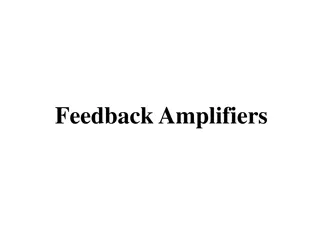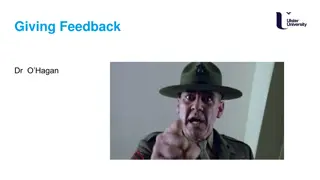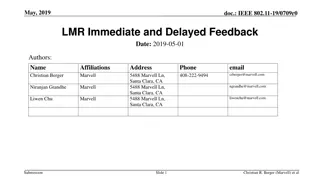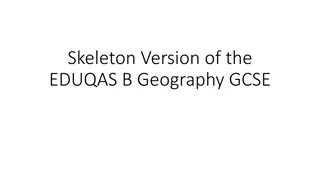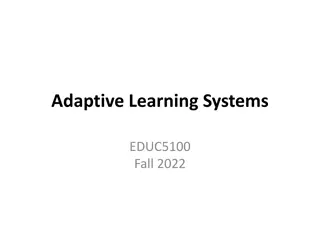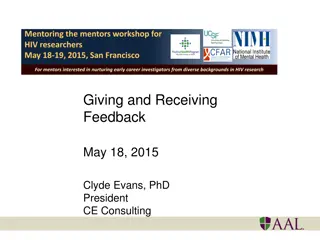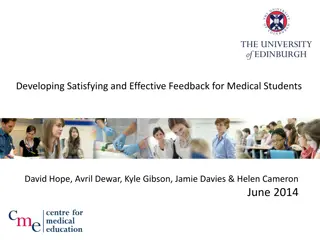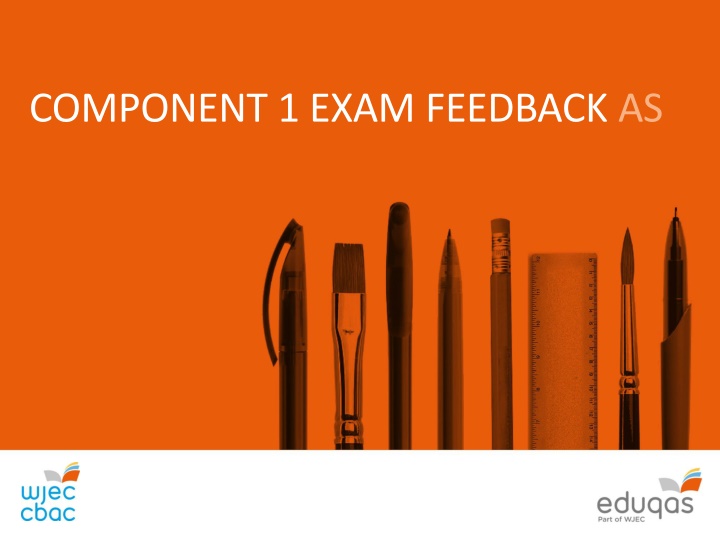
Exam Feedback on Cognitive and Behaviourist Assumptions in Psychology
Understand the feedback on exam questions related to cognitive and behaviourist assumptions in psychology. Learn about key concepts such as the computer analogy and conditioning, and how to apply knowledge effectively in assessment tasks. Gain insights on explaining theories like psychodynamic approach and biological therapy in psychology exams.
Download Presentation

Please find below an Image/Link to download the presentation.
The content on the website is provided AS IS for your information and personal use only. It may not be sold, licensed, or shared on other websites without obtaining consent from the author. If you encounter any issues during the download, it is possible that the publisher has removed the file from their server.
You are allowed to download the files provided on this website for personal or commercial use, subject to the condition that they are used lawfully. All files are the property of their respective owners.
The content on the website is provided AS IS for your information and personal use only. It may not be sold, licensed, or shared on other websites without obtaining consent from the author.
E N D
Presentation Transcript
ASSUMPTIONS Q.1 (a) Briefly explain the cognitive assumption of the computer analogy. (2) (b) Explain the behaviourist assumption that behaviour is learnt through conditioning. (4) Feedback Most students received full marks for 1a. For 1b. Students missed out on full marks by either not explaining conditioning well enough or becoming muddled. Most students included both operant and classical conditioning. It should be noted that just describing what Pavlov and Skinner did without fully explaining what the aspects of conditioning were was not enough to gain all the marks.
AO2 APPLICATION MARKS On each paper there are 10 marks that are allocated for AO2 or applying knowledge or understanding of scientific ideas. In these questions it will not be enough to just give descriptive material, you will have to engage with a quotation or use your knowledge in a slightly different way e.g. link to assumptions.
APPLICATION TO A RELATIONSHIP Q.5Relationships are just a result of unconscious processes. With reference to this statement describe how the psychodynamic approach explains why a relationship is formed. [5] Feedback This was an application question where students were asked to engage with the quote about relationships being a result of unconscious processes. Unfortunately, there was very little reference to unconscious processes in reference to relationship formation. Some students explained Bowlby s research, the tripartite personality and/or psychosexual stages, but not in reference to relationship formation. Often students considered maintenance or breakdown of relationships and again this did not match the question that was set. Assessment Objective
HOW THE APPROACH CAN BE USED IN THERAPY Q.4 Explain why a psychologist following the biological approach would consider drug therapy OR psychosurgery as a suitable therapy. [5] Feedback This was another AO2 question. These questions needed students to apply their knowledge of psychology to the questions being asked. Too many students described drug therapy or psychosurgery with very little link to why a biological psychologist would use such therapies. Better candidate answers linked the assumptions to the question. In a few cases students described both therapies, and only one of these could be credited. Whilst others listed weaknesses of a therapy, and these would not explain why a therapy was chosen unless these weaknesses were less of a problem than other therapies.
COMPONENTS OF THERAPY Q.7 (a) Describe the components of Aversion therapy OR Systematic Desensitisation [8] Feedback In this section, the most popular therapy was Systematic Desensitisation. Good answers for Systematic Desensitisation included counter conditioning, fear hierarchy, relaxation training and the different types of systematic desensitisation. Better answers also explained the role of modelling. In some instances there was confusion between in vivo and in vitro methods. Some students talked about the fear hierarchy without explaining its construction or the importance of working through and relaxing at each stage before moving on to the next stage of the hierarchy. In general Aversion Therapy was not answered with as much detail and often there was some confusion between the role of operant and classical conditioning in this therapy. A small minority included evaluative material in this answer that did not attract credit.
EVALUATION OF THERAPY (b) Evaluate aversion therapy OR systematic desensitisation [10] Feedback This question was mainly answered well. Both strengths and weaknesses were considered but some of these could be generic. Several students used Seligman s example of ancient fears and accurately described what this was however did not link it back to systematic desensitisation and the fact that the therapy may be less effective in dealing with these fears as they are a result of evolutionary processes. Better aversion therapy questions also included information on symptom substitution. The most effective answers brought together the information with a conclusion based on the evidence that had previously been presented.
EVALUATION OF APPROACH Q.6 Analyse the strengths and weaknesses of the psychodynamic approach. [10] Feedback This was answered quite well with both strengths and weaknesses being explored. Issues arose when answers were generic (e.g. the approach is not scientific), but with no reference to what in particular makes the approach unscientific. There were several well detailed answers to this question that just missed out on top marks as they failed to bring the answer together with a conclusion.
EVALUATION OF APPROACH - COMPARE AND CONTRAST 8. The biological approach may be more scientific than the psychodynamic approach. However, the psychodynamic approach still has some advantages over the biological approach. With reference to the above statement, compare and contrast the biological and psychodynamic approaches in terms of their similarities and differences. [10] (WJEC AS Paper) Feedback This question required three aspects: applying knowledge of the approaches to the quotation; writing a detailed, logical comparison and coming to a relevant conclusion. Many students made no reference to the quote. Formulaic compare and contrast answers using acronyms gained some credit but students answering on auto-pilot failed to access the highest marks. Comparing approaches on points such as having different assumptions and theories of relationships attracts minimal credit and better answers looked at wider issues such as nature/nurture.
CLASSIC PIECE OF RESEARCH -METHODOLOGY AND PROCEDURES Q.2 (a) Identify two factors that Myers and Diener (1995) explored as possible influences on happiness in their study Who is happy? [2] Feedback This question was well answered by all students. However care must be taken in ensuring that information relating to classic studies is taken directly from the original study, or summaries supplied by the exam board.
CLASSIC PIECE OF RESEARCH -FINDINGS AND CONCLUSIONS Q.3 Describe the findings of Raine, A., Buschaum, M and LaCasse, L. (1997) Brain Abnormalities in murderers indicated by positron emission tomography. [8] Feedback There were few top band answers to this question. Some students got confused between the increase and decrease in activity in reference to the right and left hemispheres. There was also confusion about activity related to areas linked and not linked with violence. Better candidate answers mentioned the control group findings. These were needed to put answers into context (e.g. NGRI group had lower rates of activity in the left hemisphere than the control group). Students also frequently gave conclusions to this question. Although marks are not taken away for this, the conclusion sections did not attract any credit.
CLASSIC PIECE OF RESEARCH -FINDINGS AND CONCLUSIONS (b) Describe the conclusions drawn by Myers and Diener (1995) in their study Who is happy? [6] Feedback Most students gave the findings of research rather than conclusions. Marks were often given by default e.g. in reference to age, culture and money and their effects on happiness. Centres need to make it clear that findings and conclusions are two very different pieces of information as students often wrote what Myers and Diener found. There are conclusions sections in the original research articles and these should be what are used to teach conclusions.
CLASSIC PIECE OF RESEARCH -EVALUATION OF CLASSIC EVIDENCE 7. Critically evaluate Bowlby s (1944) research Forty-four juvenile thieves: Their characters and home-life . [12] (WJEC AS Paper) Students must be careful when applying research methods generic evaluation points, as some used common concepts that were inappropriate for the study or not fully explained. It would be useful for students to look at both sides of an argument. Some students wasted time describing the study, which was not necessary. Some students did not elaborate their points or draw conclusions which meant their answers appeared more like a shopping list of criticisms Some students focused too much on ethics and were repeating similar points about consent and the use of children.
THE CONTEMPORARY DEBATE Q.8 Eye-witness misidentification is the greatest contributing factor to wrongful convictions proven by DNA. The Innocence Project. With reference to psychological knowledge discuss whether we should rely on the testimony of eye-witnesses. [20] Feedback There was a range of ability demonstrated in this question. Some students described evidence related to eye witness testimony without discussing whether eye witness testimony is reliable or not. Others covered a wide range of evidence and evaluated the evidence, however again did not fully address the debate. This often became an answer based on Loftus and Palmer.
THE CONTEMPORARY DEBATE Feedback There was often range but not a lot of depth and arguments were not always well thought out. Although this particular question did not require students to refer to the quote this may happen in future exam series and therefore it is essential that students are prepared to use material related to this topic in a variety of different ways. These questions can vary in how they are asked and therefore centres providing model answers to their students are likely to hamper the effectiveness of their students responses. OER
Differences between AS & A level Eduqas AS Eduqas A level Know and understand why a relationship is formed Apply the assumptions to explain a variety of behaviours Know, understand and make judgements on a classic piece of evidence (including methodology, procedures, findings, conclusions) Know, understand and make judgements on a classic piece of evidence (including methodology, procedures, findings, conclusions and ethical issues and social implications) Contemporary debate (including the ethical, social and economical implications and consideration of social & cultural diversity) Contemporary debate (including the ethical, social and economical implications)







